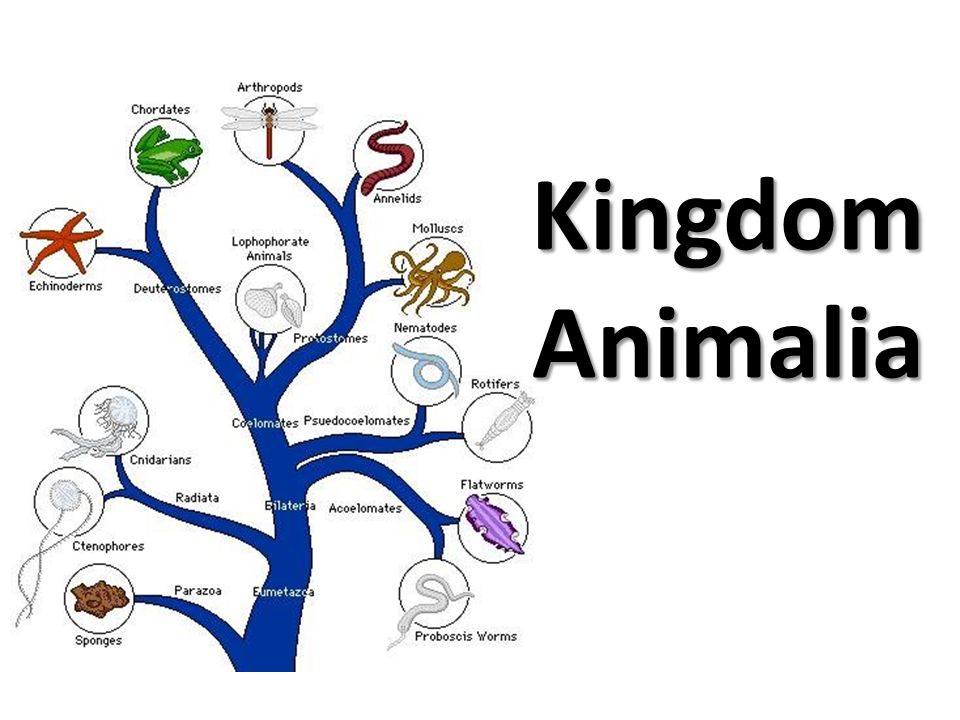The five-kingdom system was developed by
Robert H. Whittaker in 1969 and was built on the work of previous biologists
such as Carolus Linnaeus. The five kingdom system is the most common way
of grouping living things based on simple distinctive characteristics.
ü Animalia Kingdom
ü Plantae Kingdom
ü Fungi Kingdom
ü Protista Kingdom
ü Monera (Bacteria) Kingdom
Kingdom
Animalia :-
The Kingdom
Animalia is a diverse group of organisms that share certain characteristics
(we'll get to that shortly). Some members of this kingdom seem like they would
fit in elsewhere, like sponges or coral. The Animalia Kingdom is the largest of
all kingdoms with more than one million species!
Characteristics
of Kingdom Animalia
- Animals are multicellular.
- Animals are heterotrophic, obtaining their energy by consuming energy-releasing food substances.
- Animals typically reproduce sexually.
- Animals are made up of cells that do not have cell walls.
- Animals are capable of motion in some stage of their lives.
- Animals are able to respond quickly to external stimuli as a result of nerve cells, muscle or contractile tissue, or both.

Plantae Kingdom
:-
The plant is a
living being, They are sorted and classified into a separate kingdom known
as Kingdom Plantae. Plants originated under water where the sea connects
to the land. In the sea most of the organisms are photosynthetic and
unicellular.
Characteristics of Kingdom Plantae
- Plants have both organs and organ systems.
- They obtain their energy from sun through photosynthesis.
- Plants reproduce both by sexual and asexual.
- Most of the plants are eukaryotic and chlorophyll containing organisms.
- Cell walls of plant cells are comprised of cellulose.
- They have an ability to grow by cell division.
- In life cycle of plant cells, the interchanges occur from the embryos and are supported by other tissues and self produce.
- Plants develop a self defense mechanism to protect them from being destroyed by animals, fungi and other plants
- Organisms within Kingdom Plantae are multicellular, eukaryotic and autotrophic.
- They lack motility.

Fungi Kingdom :-
Fungi is a group of eukaryotic, non-phototrophic organisms with rigid cell walls, that includes mushrooms, molds and yeasts. Fungi reproduce both sexually and asexually, and they also have symbiotic associations with plants and bacteria.
Characteristics
of Kingdom Fungi
- Fungi are eukaryotic, non-vascular, non-motile and heterotrophic organisms.
- They reproduce by means of spores.
- Fungi exhibit the phenomenon of alteration of generation.
- Fungi store their food in the form of starch.
- Biosynthesis of chitin occurs in fungi.
- The nuclei of the fungi are very small.
- During mitosis, the nuclear envelope is not dissolved.

‘Protista’ is a
Greek word. These are the organisms that were traditionally considered as the
first eukaryotic forms of living, main predecessors to the organisms in the
plant, animal, and the fungus kingdoms.
Characteristics of Kingdom Protista
- They are mostly unicellular but some are multicellular and colonial organisms.
- They are either free-living or parasitic.
- They have aerobic mode of respiration and have mitochondria for cellular respiration.
- They are true eukaryotes and are nucleated.
- They have (9+2) arrangement of flagella and have membranous organelles.
- They reproduce both sexually (syngamy) and asexually.
- They are grouped into 3 categories: animal like (protozoa), fungus like, and plant-like.
- According to the categories, they have different modes of nutrition, like heterotrophy or autotropohy.
- Plant-like protists (algae) have chlorophyll and accessory pigments, named xanthophylls, phycobilins, and carotene.

The Monera Kingdom consists of unicellular lifeforms. Unicellular means that they only have one cell. These cells have no nucleus, and are missing many organelles, or parts, found in other cells. Monera are considered, by many scientists, to be the oldest life forms on Earth. They are probably the ancestors of all living organisms on our plane
Characteristics
of
Kingdom Monera :-
- General characteristics of the kingdom Monera are as follows:
- They are primitive organisms.
- All organisms of the kingdom are prokaryotes.
- They are present in both living and non-living environment.
- They can survive in harsh and extreme climatic conditions like in hot springs, acidic soils etc.
- They are unicellular organisms.
- Membrane bound nucleus is absent.
- DNA is in double stranded form, suspended in the cytoplasm of the organism,referred as nucleoid.
- A rigid cell wall is present.
- Membrane bound cellular organelles like mitochondria are absent.
- Habitat - Monerans are found everywhere in hot springs, under ice, in deep ocean floor, in deserts and on or inside the body of plants and animals.
- Nutrition - autotrophs - can prepare their own food, heterotrophs - depend on others for food, saprophytes - feed on dead and decaying matter, parasitic - live on other host cells for survival and cause, symbiotic - in mutual relation with other organisms, commensalism - it is where one organism is benefited and the other is not affected, mutualism - where both the organisms are benefited.
- Respiration - respiration in these organisms vary, they may be obligate aerobes - the organisms must have organisms for survival; obligate anaerobes - the organisms cannot survive in the presence of oxygen; facultative anaerobes - these organisms can survive with or without oxygen.
- Circulation - is through diffusion.
- Movement - is with the help of flagella.
- Reproduction is mostly asexual, sexual reproduction is also seen. Asexual reproduction is by binary fission, sexual reproduction is by conjugation, transformation and transduction.




0 Comments
Please do not Comment any Spam Content.